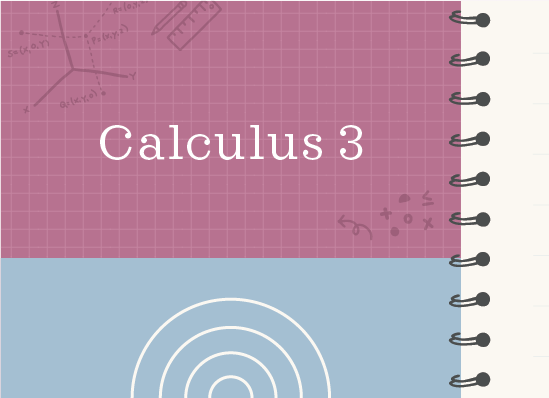Finding vector, parametric, and symmetric equations of a line
Vector, parametric, and symmetric equations of the same line
Vector, parametric, and symmetric equations are different types of equations that can be used to represent the same line.
Hi! I'm krista.
I create online courses to help you rock your math class. Read more.
We use different equations at different times to tell us information about the line, so we need to know how to find all three types of equations.
The vector equation of a line is given by
???r=r_0+tv???
where ???r_0??? is a point on the line and ???v??? is a parallel vector
The parametric equations of a line are given by
???x=a???
???y=b???
???z=c???
where ???a???, ???b??? and ???c??? are the coefficients from the vector equation ???r=a\bold i+b\bold j+c\bold k???
The symmetric equations of a line are given by
???\frac{x-a_1}{v_1}=\frac{y-a_2}{v_2}=\frac{z-a_3}{v_3}???
where ???a(a_1,a_2,a_3)??? are the coordinates from a point on the line and ???v_1???, ???v_2??? and ???v_3??? are the coordinates from a parallel vector.
How to convert between vector, parametric, and symmetric equations of a line
Take the course
Want to learn more about Calculus 3? I have a step-by-step course for that. :)
Finding the three types of equations of a line that passes through a particular point and is perpendicular to a vector equation
Example
Find the vector, parametric and symmetric equations of the line that passes through the point ???a(2,-1,3)??? and is perpendicular to ???2\bold i-\bold j+4\bold k=1???.
Before we get started, we can say that the given point ???a(2,-1,3)??? can also be represented by ???2\bold i-\bold j+3\bold k???. Additionally, we know that the given vector ???2\bold i-\bold j+4\bold k=1??? can be represented by ???\langle2,-1,4\rangle???, or ???2\bold i-\bold j+4\bold k???. To summarize what we know, we have
We use different equations at different times to tell us information about the line, so we need to know how to find all three types of equations.
To find the vector equation of the line, we’ll use ???r=r_0+tv???, where ???r_0??? is the point on the line ???2\bold i-\bold j+3\bold k??? and ???v??? is the perpendicular vector ???2\bold i-\bold j+4\bold k???.
???r=(2\bold i-\bold j+3\bold k)+t(2\bold i-\bold j+4\bold k)???
???r=2\bold i-\bold j+3\bold k+2\bold it-\bold jt+4\bold kt???
???r=(2\bold i+2\bold it)+(-\bold j-\bold jt)+(3\bold k+4\bold kt)???
???r=(2+2t)\bold i+(-1-t)\bold j+(3+4t)\bold k???
With the vector equation of this line in hand, it’ll be very easy for us to find the parametric equations of the line, because all we have to do is take the coefficients from the vector equation, and the parametric equations are
???x=2+2t???
???y=-1-t???
???z=3+4t???
To find the symmetric equations, we’ll just plug the given coordinate point in for ???a_1???, ???a_2??? and ???a_3???, plus the coefficients from the perpendicular vector in for ???v_1???, ???v_2??? and ???v_3???.
???\frac{x-2}{2}=\frac{y-(-1)}{-1}=\frac{z-3}{4}???
???\frac{x-2}{2}=-y-1=\frac{z-3}{4}???
In conclusion, we’ve found the following three equations for the same line:
There’s one other thing you need to be aware of when you’re finding symmetric equations. Sometimes ???v_1???, ???v_2??? or ???v_3??? will be equal to ???0???. In this case, you pull that particular fraction out of the symmetric equation, put it by itself, and don’t divide by ???0???. So, if the formula for symmetric equations is
???\frac{x-a_1}{v_1}=\frac{y-a_2}{v_2}=\frac{z-a_3}{v_3}???
and ???v_1=0???, then the symmetric equations become
???x-a_1???, ???\frac{y-a_2}{v_2}=\frac{z-a_3}{v_3}???








